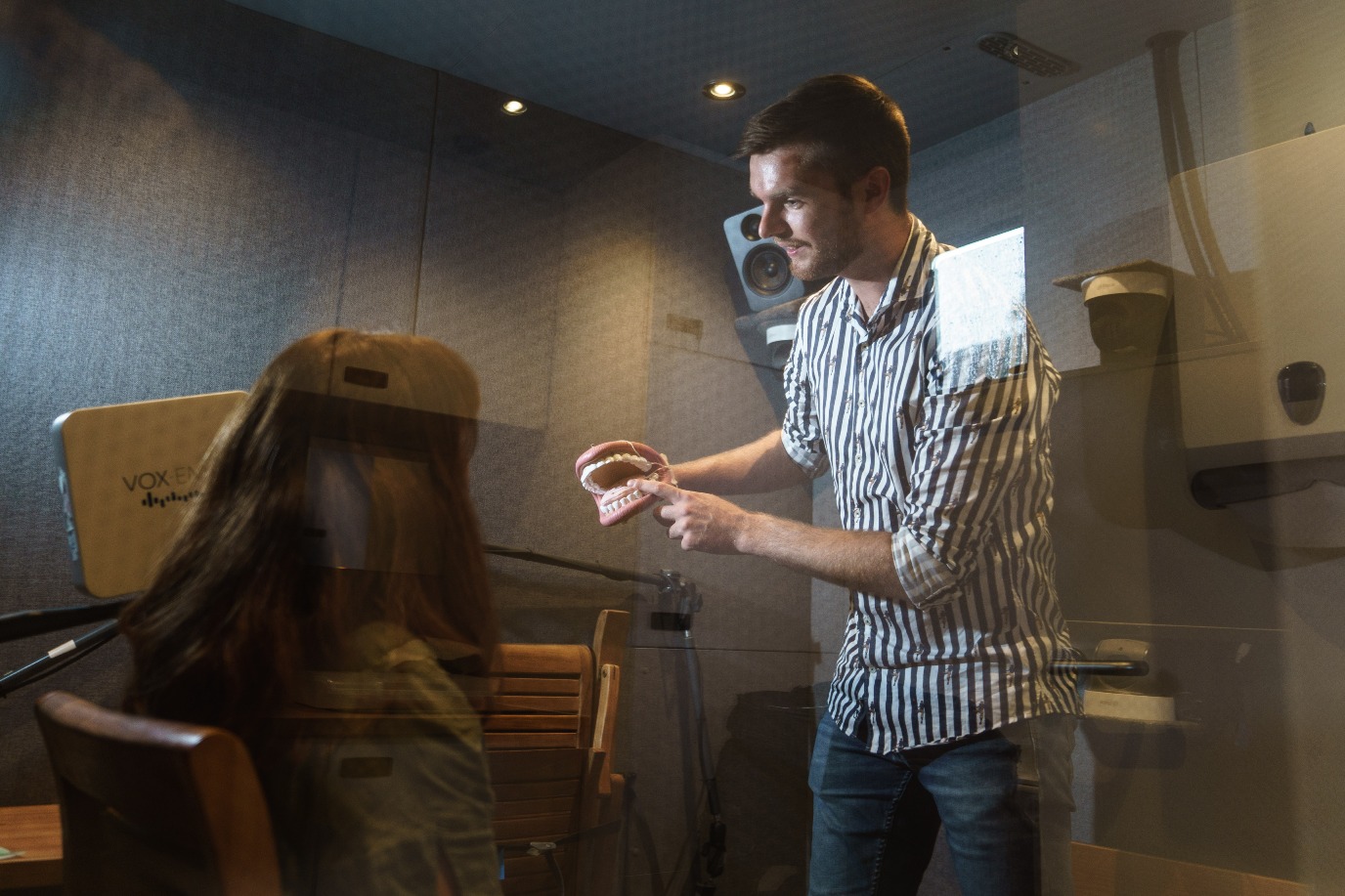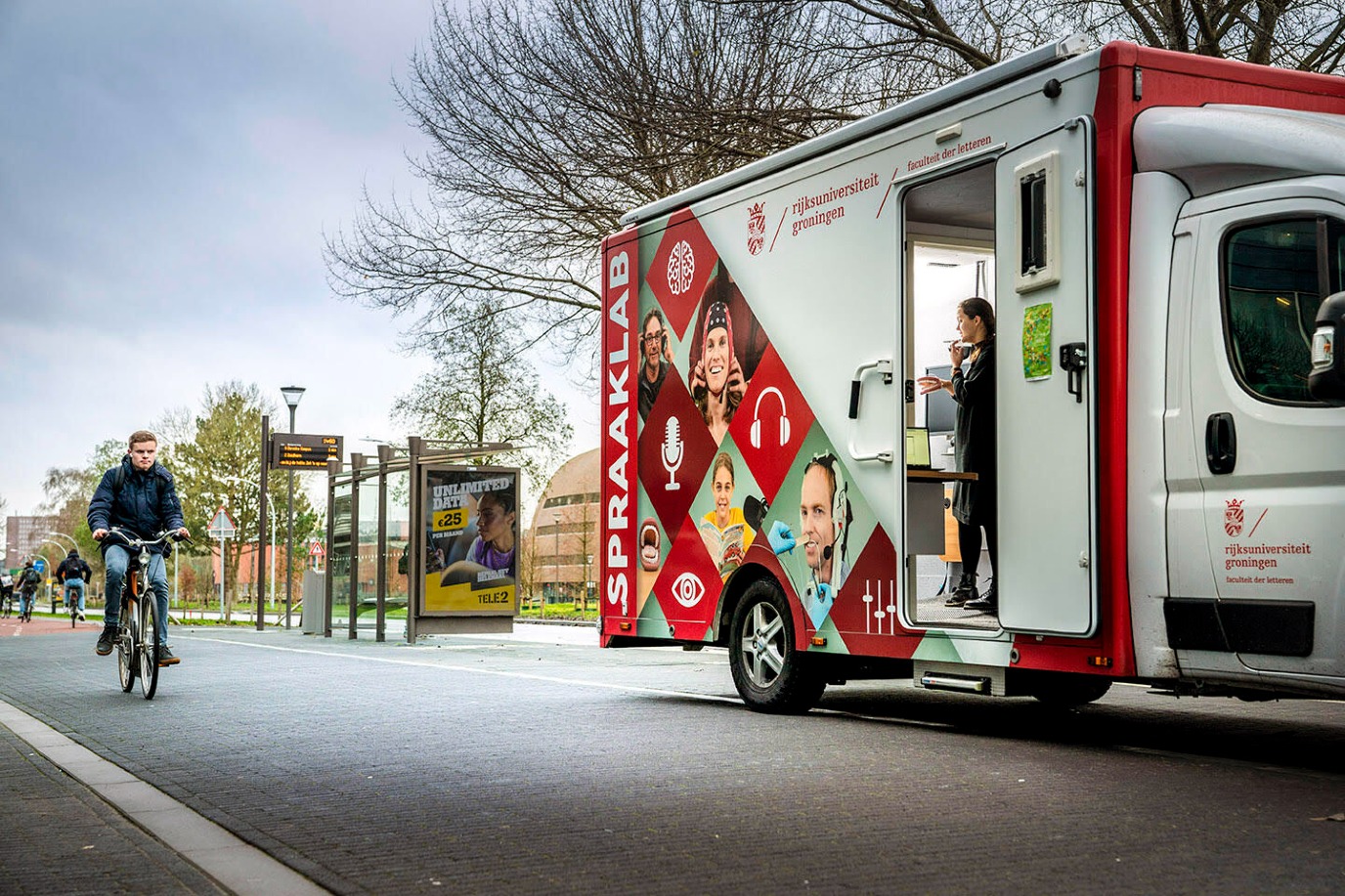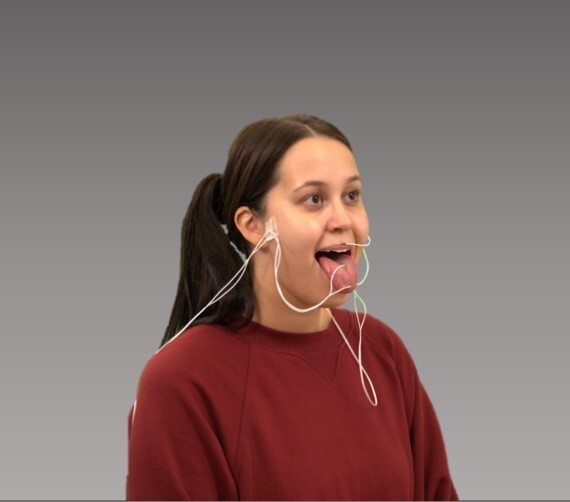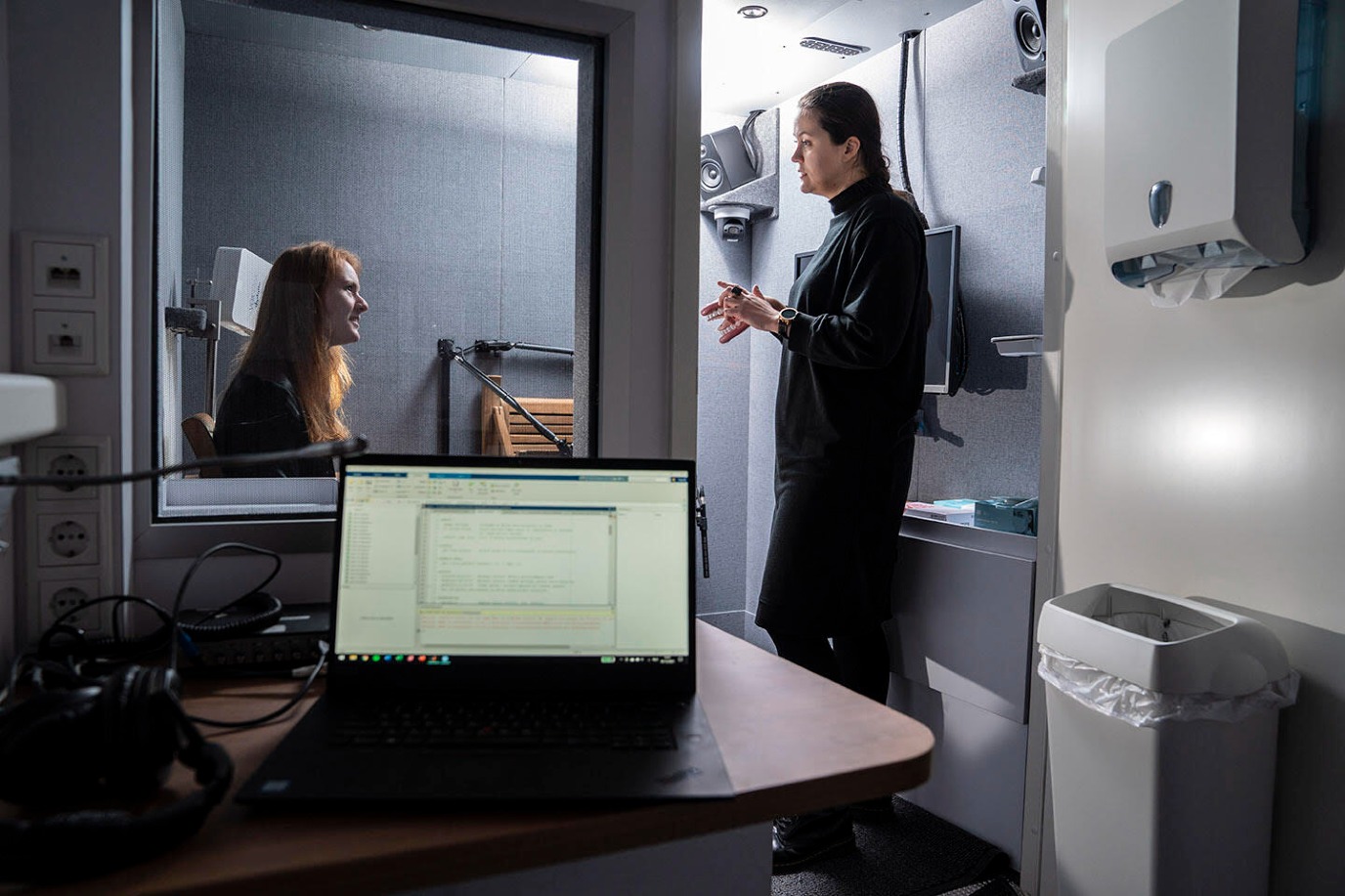Tracking the tongue
We do it every day: talking to others. Although it seems deceptively simple, verbal communication requires a precise and complex coordination of dozens of muscles, from the lungs and the larynx, to the tongue, the jaw, and the lips. Thomas Tienkamp and Teja Rebernik explain how fundamental research on articulation could help explain speech disorders and may contribute to the recovery of people with speech disorders in the future.
By Thomas Tienkamp and Teja Rebernik / Photos: Reyer Boxem
We are often unaware of the process of speaking. However, we become aware of this process when speech becomes impaired due tochanges in the brain, for example Parkinson’s disease, or physiological changes, such as from a tumour on the tongue. Speech disorders can manifest in different ways. For example, some people speak too softly, while others have trouble articulating clearly.
Measuring articulation
As speech researchers at the Center for Language and Cognition Groningen of the Faculty of Arts, we have a number of tools at our disposal for the measurement of articulation, i.e., the way we produce specific sounds. The most straightforward method is to make recordings with a microphone, which we call acoustic recordings, given that they capture an acoustic signal. By analysing the physical properties—e.g., frequencies and loudness—of individual sounds, we can already get some idea of what a person’s speech system does to produce those sounds. For example, we know that specific frequency measurements are affected by tongue movements, and that the loudness of our voice is affected by respiratory effort from the lungs.

Recording speech movement
The problem with acoustic recordings, if we want to study individual sounds, is that people can produce the exact same sound using many different tongue, jaw, and lip movement configurations. So, although we certainly have an idea of what someone is doing, and know what the final result is, we are not 100% sure how the speaker produced the sound. If we truly want to say something about the way someone is producing specific sounds, we need to measure those articulatory movements directly by making, what we call, kinematic, or movement, recordings. One way we can measure articulatory movements is through electromagnetic articulography (EMA). EMA is a technique that uses motion-tracking sensors to track the movements of the articulators in real time, namely those of someone’s tongue, jaw, and lips.
The value of recording articulatory movements
A major advantage of EMA is that we can measure movements with high resolution, both in the spatial and temporal domain. Both domains are important when studying speech articulation, because for some sounds, small movements can result in big acoustic changes. It is also more accessible than some other techniques that allow you to measure multiple articulators, such as real-time magnetic resonance imaging. This is especially important when we want to use this technique to study the articulation of people with speech impairments. These speakers tend to be more variable in their tongue, lip, and jaw movements compared to typical speakers. Studying their articulation in a direct way provides important insights that help explain the nature of the speech impairment. By determining which articulator movements have changed as a result of the speech impairment, we can provide input for future speech therapies, for example by designing specific exercises that target the affected movements.

Speaking after tongue cancer surgery
In our labs, the Speech Lab Groningen and the Speech Biosignal Processing Lab, we apply EMA to study the articulation of people with several different types of speech difficulties. For example, in one project, we follow individuals undergoing surgical treatment for tumours located on the tongue. Treating tumours on the tongue can lead to problems with speech and swallowing, because parts of the tongue are removed during surgery and scar tissue can reduce the mobility of the remaining tissue. Although it is common knowledge that speech difficulties have a negative impact on someone’s quality of life, we know surprisingly little about how surgical treatment for oral tumours affects speech articulation.
EMA can help design better speech rehabilitation strategies
By measuring a person’s speech before and after surgery, we can assess whether and how speech articulation changes. Moreover, because we measure the affected speech movements directly, we can also help design better speech rehabilitation strategies, for example by specifically focusing on a certain tongue or jaw movement that is affected. Speech function is undeniably linked to the ability to communicate, and since humans are social creatures, good speech function is extremely important for a good quality of life.

Speech problems caused by Parkinson’s disease
In another study in our labs, we use EMA to study how individuals with and without Parkinson’s disease control the way they speak. People with Parkinson’s often have problems with, for example, speaking too softly and articulating clearly, but it is unclear where their speech problems come from. In order to speak, our brain uses stored motor programmes to initiate our speech and at the same time checks whether what we produce matches our intended production. We can assess both processes by using so-called speech perturbation experiments, during which we change what participants hear while they are producing single words.
For example, they say the word ‘head’ but hear the word ‘hid’. As a result, the brain detects an error and immediately initiates changes to ‘fix’ this mistake. We gain insight into how well a person’s speech motor system functions by assessing how quickly and to what extent they change their articulation due to the mismatch between what they expected to hear and what they actually heard. By using EMA, we can assess not only how the output differs, but also whether the control group and people with Parkinson’s disease use different articulatory strategies to ‘fix’ the mistake. This allows us to better understand where speech disorders in Parkinson’s disease come from and underlines the importance of using kinematic methods such as EMA to capture speech production.

A wonderful tool for fundamental speech research
Since EMA is a motion-tracking system, it can also essentially track any type of movement we use or need for speech. For example, studies use EMA to assess swallowing, chewing, breathing, and other processes involving the vocal tract. Therefore, in the same study on Parkinson’s disease, we are also able to quantify a tremor of the tongue during different tasks.
In conclusion, EMA is a wonderful tool to measure not only articulatory movements in speech but also any movements of the articulators, whether voluntary or involuntary. By comparing people with and without speech difficulties, we can characterize and define the articulatory profile of various populations with speech difficulties, e.g. individuals treated for tongue cancer or those with Parkinson’s disease. Knowing where articulation falters is crucial for designing targeted rehabilitation strategies that will hopefully help to improve people’s communicative abilities and quality of life.
More information
-
Thomas Tienkamp
More news
-
18 November 2025
What about the wife beater? How language reinforces harmful ideas
-
03 November 2025
Menopause in perspective: How the media influences our perception
-
23 October 2025
Nine UG researchers awarded Vidi grant
